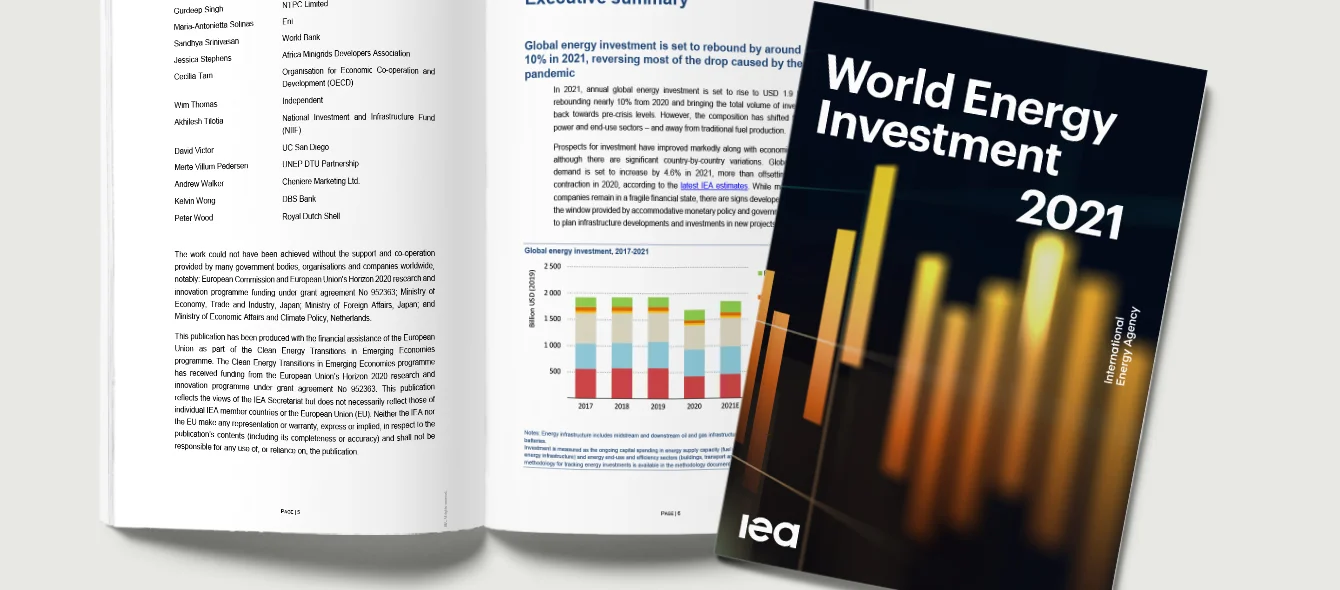Global energy investment is set to rebound in 2021 by nearly 10%, returning to pre-pandemic levels, according to the International Energy Agency’s (IEA) recent World Energy Investment 2021 report. The composition of that investment is shifting more towards the power and end-use sectors and away from traditional fuel production.
There is a structural shift in capital flows towards cleaner technologies, the IEA says, but investment needs to rise much quicker though the 2020s to meet climate change targets.
Power sector leads the way
Electricity continues to attract the largest overall share of investment, with renewables now accounting for about 70% of all new generation capacity worldwide. For the fifth year in a row, capital spending in the power sector in 2020 was higher than for oil and gas supply. Owing to significant cost reductions, the IEA says a dollar spent on wind and solar photovoltaic power today results in four times as much clean electricity generation as a dollar spent on the same technologies ten years ago.
Major fault line
Investment in renewables is thriving in markets with well-established supply chains and regulatory regimes which provide cash flow visibility and thus investor confidence. However, many developing countries lack the ability to pursue expansionary, Covid-19 recovery strategies and investment in these countries will remain below pre-crisis levels, the IEA finds.
Developing countries, excluding China, account for two-thirds of the global population, but only one-third of global energy investment and just one-fifth of clean energy investment. For example, spending on energy efficiency is set to rise by nearly 10% in 2021, but it is heavily concentrated in markets and sectors which have clear government policies, and where governments can support investment.
This division between the developed and developing world, the IEA warns, “is a major fault line” in the global energy transition.
Well below target
Stimulus spending on clean energy technologies overall is still falling well short of what is needed to combat climate change, the IEA says. Clean energy investment is expected to rise by 7% this year, but it needs to double in the 2020s to restrain the rise in global temperatures to 2°C above pre-industrial levels and would need to more than triple to stabilise the climate at a temperature rise of 1.5°C.
Investment coordination
Managing the pace of change in different areas brings some fundamental challenges which governments must address, the IEA says. The risk of imbalances is high. Investment in electricity grids, for example, needs to keep pace with the expansion of wind and solar power to avoid bottlenecks in the growth of clean energy supply.
In addition, while the rise in sustainable finance is positive, there is now more capital seeking clean investments than there are clean energy projects, and action is required to direct this surplus capital to the right places, such as new technology innovation.
Fossil fuel conundrum
The risk of imbalances is not confined to new energy technologies. The IEA notes that the balance of investment in fossil fuels is shifting to state companies. The major oil companies’ share of upstream spending has fallen from nearly 40% in the mid-2010s to just 25% today. Their spending on clean energy investment is rising and could represent more than 4% of their total expenditure in 2021, up from 1% in 2020.
Nonetheless, investment in fuel supply remains dominated by fossil fuels with only 1.3% spent on low carbon fuels. Yet there is a risk that oil and gas companies transition away from fossil fuel production faster than consumers. This creates a real conundrum. The IEA says spending on fuels is neither strong enough to meet current trends in fossil fuel consumption, nor sufficiently diversified to meet tomorrow’s clean energy goals.
